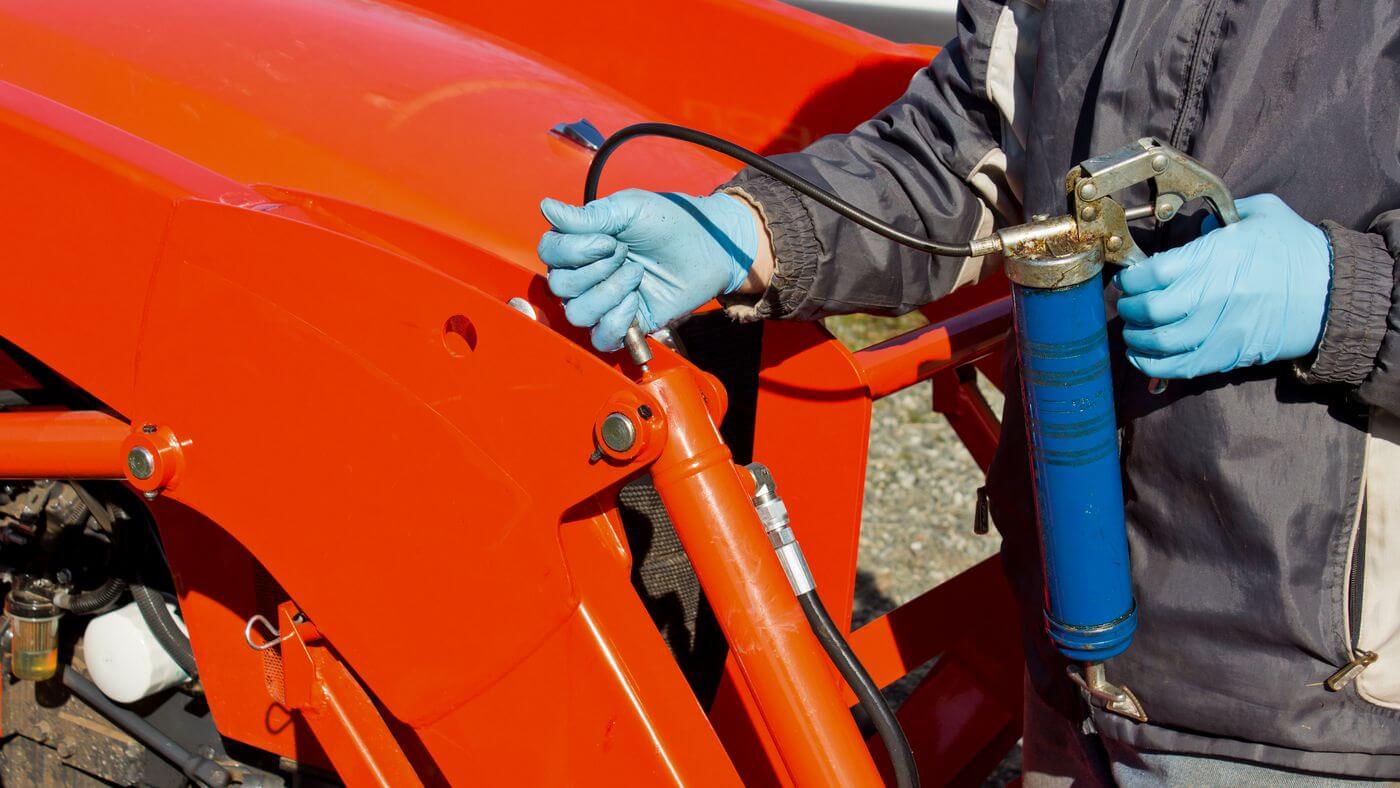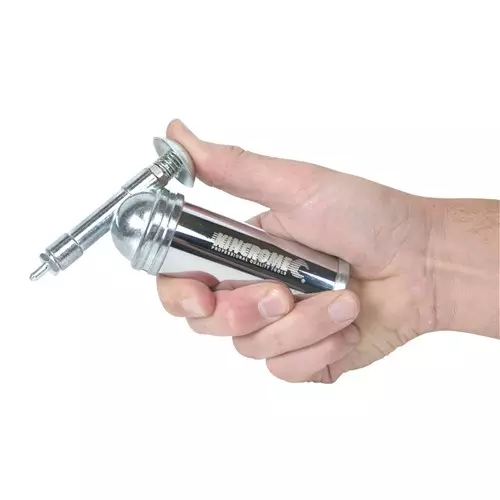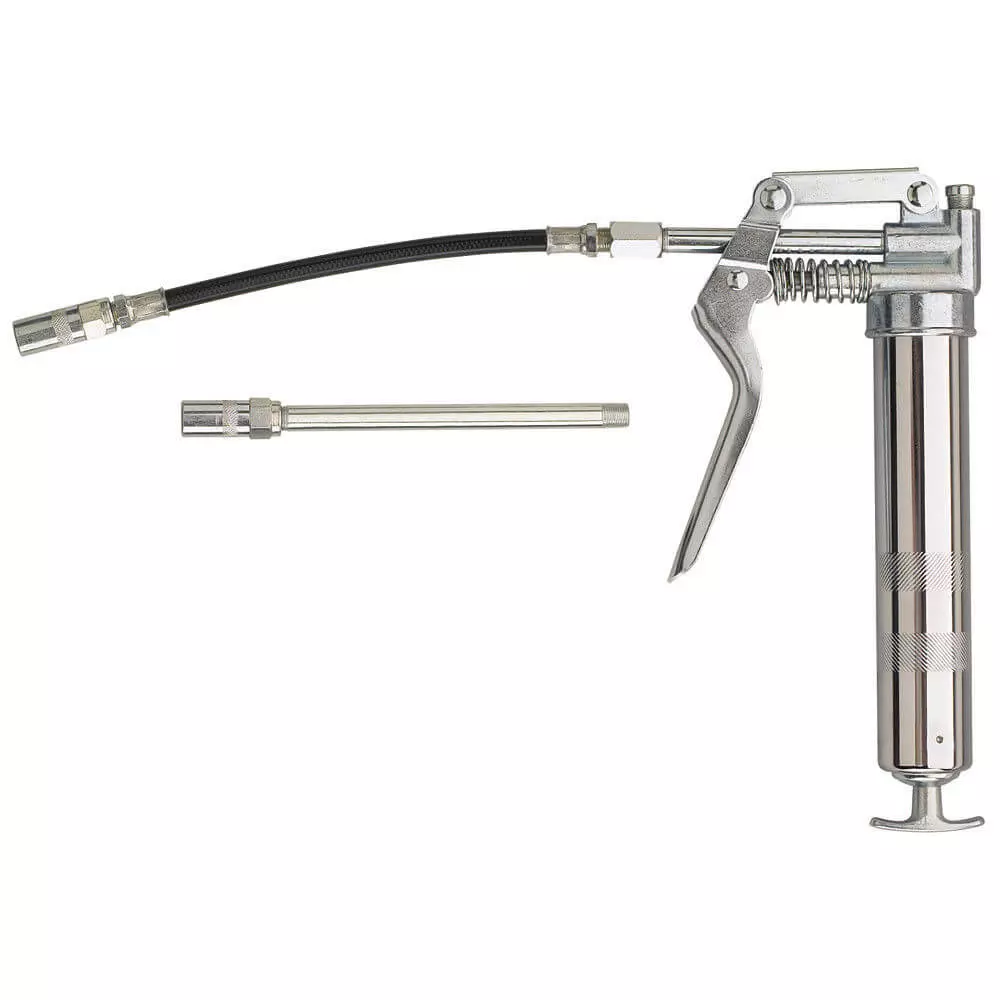Comments
- No comments found

If you own a car or a truck, it's only a matter of time until something inside the car breaks down.
And while roadside assistance is often slow and expensive, it's definitely not the only option to get your vehicle on the road again. One alternative you have in hand is buying a grease gun to fix your vehicle at home, and prevent it from breaking down while driving.
Grease guns can replace your manual labor with power tools, so it can be easy to justify their cost when you're on the side of the highway. But grease guns can be dangerous if they aren't used properly which is why you'll need to consider a few important factors before making your final purchase.

The first thing you should consider when buying a grease gun is its weight. A heavy grease gun can cause fatigue and injury if used for extended periods. If you're going to be using your grease gun often, make sure it's lightweight enough so it doesn't weigh down your toolbox or workbench.
A good quality grease gun should last a long time if properly maintained, so look for ones made with durable materials such as aluminum or stainless steel so they don't break down easily after minimal wear and tear.
There are many different types of grease guns on the market today and they vary greatly in price. You will find that some models are more expensive than others due to additional features or better quality materials used in their construction.
If you are looking for something inexpensive then it may be worth considering buying an older model that has been discontinued by the manufacturer but is still available from third-party retailers who have stock remaining from when it was new on sale at a discounted price.
How much grease can the grease gun hold? The capacity of a grease gun is measured in ounces per stroke. The more ounces you need, the more strokes you will have to make to fill out your application. This is important because if the grease gun doesn't have enough capacity for your application, it will take longer than necessary for you to fill it up completely.
Will your hands fit comfortably around the handle? Is there enough room for your hand so that it doesn't feel cramped when you're pumping? The pump action should also be smooth and easy so that it's not difficult or overly tiring to use over time.

Next, consider what purpose your grease gun will serve in your shop or garage. Do you want to use it for automotive purposes or something more industrial? Your answer will determine which type of grease gun is right for your needs.
There are two main types of grease guns: manual and automatic. Manual grease guns require you to pump the handle back and forth manually, while automatic ones have an internal gear system that does this for you automatically. The difference between these two types means that they each have their advantages and disadvantages.
Manual grease guns are generally cheaper than automatic ones because they don't have any mechanical parts inside them that need maintenance or repair. However, manual grease guns take more effort on your part than automatic ones do, which can make them tiring if you use them for long periods at one time (such as when changing the oil in your car). Automatic grease guns do require maintenance every once in a while but not as often as manual ones do since they don't rely on human power to function properly.
Before buying a grease gun, you'll want to make sure that the unit has the right amount of pressure for your needs. Most automotive grease guns operate at between 7-10 pounds per square inch, although some models are designed for heavy-duty industrial applications and can operate at 15-20 PSI or higher. As an example, if you're working on trucks or other large vehicles, then you'll need a grease gun with more power than one designed for use in automobiles.
Leave your comments
Post comment as a guest